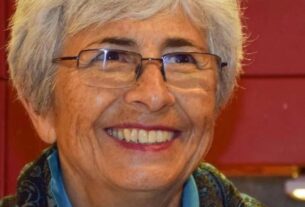Since reciting Kaddish is a concrete way of honoring a departed loved one, mourners are understandably anxious to do so at every possible opportunity. In most Ashkenazic congregations, mourners say Kaddish four times during Shacharit: after Korbanot, after Mizmor Shir Chanukat Ha’Bayit, after Aleinu, and after Shir Shel Yom. Many become upset if they miss even one of these; presumably, they assume that with each additional Kaddish, additional benefit accrues to the deceased’s neshamah (cf. Zohar, Tosefta 62b).
While contemporary Jews’ devotion to this custom is admirable, it is important to maintain an accurate perspective on it. The primary way to honor one’s parents posthumously is not by reciting Kaddish per se, but by leading the entire service (which obviously includes saying several Kaddishim). Saying a separate Kaddish Yatom is a medieval Ashkenazic innovation, instituted for the benefit of mourners incapable of serving as a shliach tzibbur. Therefore, those who do lead the service as aveilim need not recite the additional Mourner’s Kaddish (see Aruch Ha’Shulchan, Yoreh De’ah 376:12), although of course they may do so if they wish.
<!–
Publisher #16: JewishPress.com
Zone #113: Comment Banner / (02) / News
Size #15: Banner 468×60 (Comments and Mobile) [468×60]
–> ‘); _avp.push({ tagid: article_top_ad_tagid, alias: ‘/’, type: ‘banner’, zid: ThisAdID, pid: 16, onscroll: 0 });
The original Mourner’s Kaddish was the one recited after Aleinu – even today, people think of this one as the most important. Indeed, the Rema rules that it should be said even if there is no mourner in shul (Orach Chayim 132:2). Why, then, have we added another Mourner’s Kaddish after Shir Shel Yom, which immediately follows Aleinu? Surely reciting two Kaddishim in such close proximity runs afoul of poskim’s admonition not to recite superfluous Kaddishim (Mishnah Berurah 55:1).
The answer seems to be as follows: In the times of the Rema (and earlier), Shir Shel Yom was actually not recited publicly at all; the Kaddish after Aleinu concluded the service. When the custom to recite the daily psalm took hold, mourners said Kaddish after it – appropriately, since Kaddish should be the end of davening. However, the idea was already entrenched that the main Kaddish Yatom comes right after Aleinu, so Kaddish continued to be recited at that point as well.
And yet, since there is no actual need to recite Kaddish after Aleinu specifically, the imperative to reduce the number of Kaddishim would seem to require that Kaddish Yatom be said only once – after Shir Shel Yom or any additional psalms recited at the end of the service (cf. Mishmeret Semachot, ch. 32 n. 56).
In congregations in which only one person says Kaddish at a time (following the ancient minhag), there is perhaps room to be flexible about reciting extra Kaddishim so that everyone gets a Kaddish (Mishmeret Semachot 32:31). But according to the common practice, to which all mourners recite Kaddish simultaneously, there is no reason for so many Kaddishim since no one will be left Kaddish-less. Indeed, some mourners have complained to me that an excessive number of Kaddishim makes it difficult to concentrate on reciting them with kavanah.
A similar case of two Kaddishim in too-close proximity occurs at the beginning of the service. There is no evident reason to recite Kaddish de’Rabbanan after Korbanot and then Kaddish Yatom after Mizmor Shir. This practice apparently began as an amalgamation of two different customs – some shuls recited Kaddish only after Korbanot and others after Mizmor Shir; eventually people began doing both (see Seder Rav Amram Gaon, Otzareinu ed., appendix to siman 9). It would be much better to recite only one of the two – preferably after Mizmor Shir only.
As a historical note, the recitation of any Kaddish before Psukei de’Zimrah is an extremely late innovation. In ancient times, the communal service began with Yishtabach – everything prior was recited by each worshiper privately (some congregations and yeshivot, especially in Israel, maintain this practice even today). Even when it became common for a chazzan to recite parts of Korbanot and Psukei de’Zimrah aloud, Kaddish de’Rabbanan was not said as part of the prayer service (see Siddur Eizor Eliyahu ad loc.).
Furthermore, Mizmor Shir Chanukat ha’Bayit only began to be added to the Ashkenazic liturgy in the 18th century. Prior thereto, no one said Kaddish after Mizmor Shir for the simple reason that that psalm wasn’t recited at all! In fact, many have argued against its inclusion in nusach Ashkenaz, and German Jews and followers of the Vilna Gaon continue to omit it (see Siddur R. Shabtai Sofer, supplemental notes to p. 52).
Unfortunately, many people are under the impression that the Kaddishim at the beginning of the service are just as obligatory for mourners as the one(s) at the end. I have been in shuls where there was not yet a minyan at the end of Korbanot, and mourners insisted that the service be stopped until a 10th man arrived so that they could say Kaddish. In light of the above, it should be clear that such “scrupulousness” is entirely unnecessary. In fact, it would be a greater merit for the deceased’s soul to refrain from tircha de’tzibbura (burdening the congregation with unnecessary delays).
To conclude: The mourner’s Kaddish needs to be recited only once – at the end of each service. It would seem that nowadays, the mourner’s Kaddish during Shacharit should follow Shir Shel Yom rather than Aleinu. Mourners may additionally choose to recite one (and preferably only one) Kaddish before Psukei de’Zimrah, although this is not at all obligatory. Additional Kaddishim should only be recited in congregations where only one person at a time recites Kaddish, since more Kaddishim are often required to accommodate all the mourners.
_________________
- In fact, the Biblical verses at the end of Aleinu were added specifically so that Kaddish could be recited after it (since one recites Kaddish only after saying pesukim). See Seder Rav Amram Gaon, Otzareinu ed., vol. 3 p. 701. It should be noted that at an even earlier time, Aleinu was not recited at all as part of the daily tefillot and the service concluded with Kaddish Titkabal. With such a nusach, there is obviously no room for saying Kaddish Yatom after davening at all.
- It is possible to argue that the single Kaddish should instead be recited after Aleinu to demonstrate that the additional psalms said afterwards were later additions, and to parallel the service of Mincha and Maariv where Aleinu actually does conclude the davening (heard from R. Yitzchok Satz).
- Saying Kaddish after Mizmor Shir sets it apart from Psukei de’Zimrah proper. See additional reasons in Seder Rav Amram Gaon (op. cit.).
‘);
_avp.push({ tagid: article_top_ad_tagid, alias: ‘/’, type: ‘banner’, zid: ThisAdID, pid: 16, onscroll: 10 });




